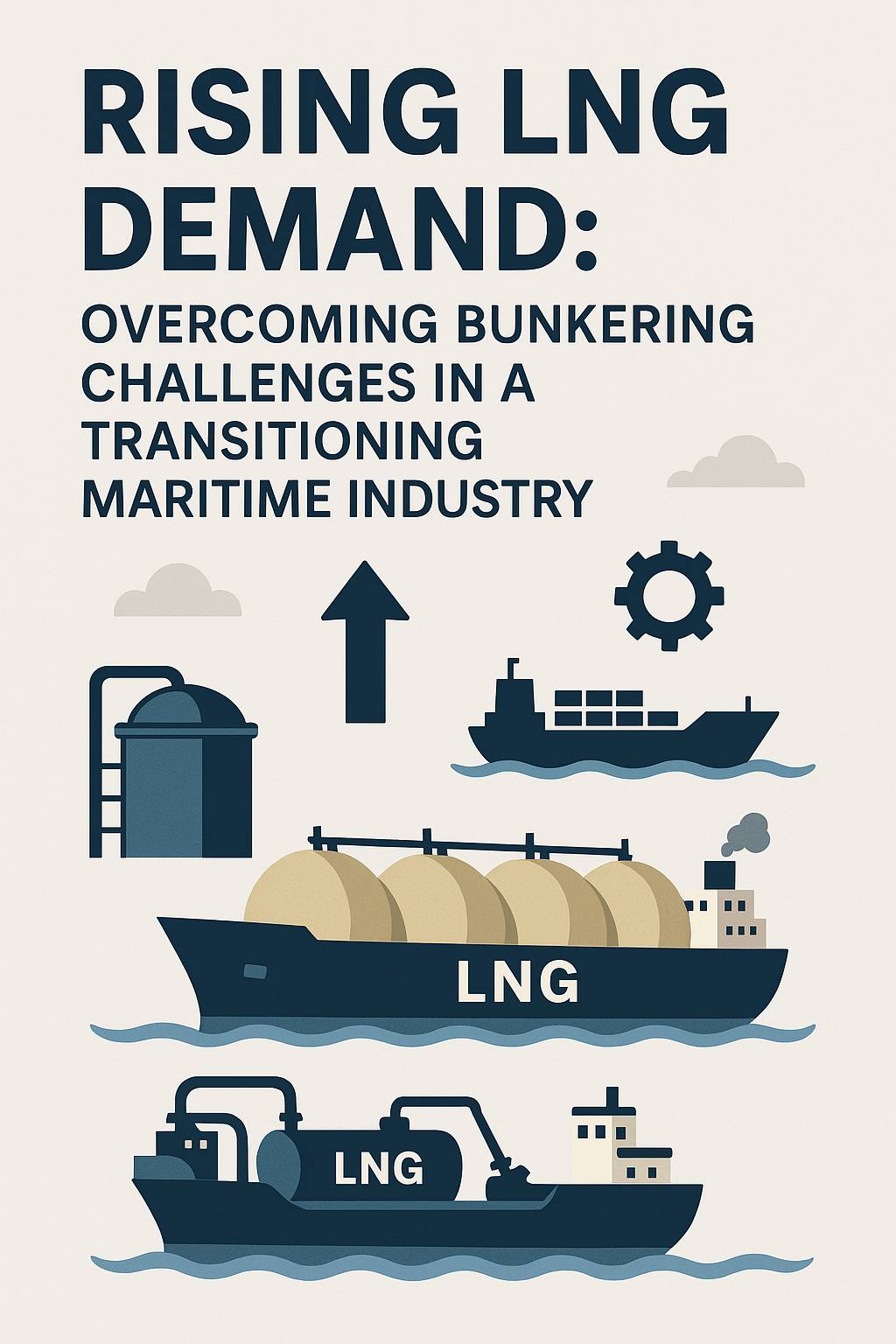Rising LNG Demand: Overcoming Bunkering Challenges in a Transitioning Maritime Industry

Introduction: LNG's Growing Role in Maritime Fuel Transition
As the maritime industry moves toward sustainability, Liquefied Natural Gas (LNG) has emerged as a key alternative to traditional marine fuels. With increasing regulatory pressure to reduce greenhouse gas emissions and limit sulfur content, LNG offers a cleaner and more efficient solution. However, as demand for LNG rises globally, the maritime industry faces critical challenges related to bunkering infrastructure, safety, and supply chain readiness.
Why LNG? The Cleaner Fuel Alternative
LNG reduces sulfur oxide (SOx) emissions by nearly 100%, nitrogen oxide (NOx) by up to 90%, and carbon dioxide (CO₂) by around 20% compared to conventional fuels. Its adoption supports compliance with IMO 2020 regulations and aligns with the industry's push for decarbonization. The fuel’s environmental benefits and energy efficiency are key drivers behind its increasing demand among shipowners and operators.
Current Challenges in LNG Bunkering
Infrastructure Limitations
Despite the growing LNG fleet, bunkering infrastructure lags. Many ports, especially in developing regions, lack the necessary storage tanks, pipelines, and refueling equipment to support LNG bunkering. This restricts ship route flexibility and affects voyage planning.Limited Bunkering Hubs
LNG bunkering services are currently concentrated in major hubs such as Rotterdam, Singapore, and selected North American ports. The lack of a global network creates uneven access and adds complexity for operators seeking reliable LNG supply chains.High Initial Investment
Transitioning to LNG-powered vessels and establishing bunkering infrastructure requires substantial capital investment. Shipowners must retrofit existing vessels or invest in new LNG-ready ships, while ports must upgrade or build LNG refueling capabilities, posing a financial challenge.Regulatory and Safety Standards
LNG is cryogenic and highly flammable, requiring strict handling protocols. The lack of harmonized global regulations and safety standards can delay project implementation and raise operational risks during bunkering operations.Training and Workforce Readiness
The safe handling of LNG demands specialized training for crew, bunkering personnel, and port operators. Without a skilled workforce, the risk of accidents and operational inefficiencies increases.
Innovations and Strategic Solutions
Expansion of Bunkering Vessels
Shipping companies and LNG providers are investing in LNG bunker vessels to support offshore and ship-to-ship transfers. These mobile bunkering units improve service flexibility and reduce dependence on shore-based terminals.Public-Private Partnerships
Collaborative initiatives between governments, ports, and private stakeholders are facilitating infrastructure development. Subsidies, tax incentives, and policy frameworks help mitigate financial risks and accelerate LNG adoption.Digitalization and Automation
The use of digital tools, such as bunkering monitoring systems, real-time data tracking, and AI-based logistics planning, ensures safe and efficient LNG bunkering operations. Automation also reduces human error and improves compliance.Standardization Efforts
International bodies like the IMO and ISO are working to standardize LNG bunkering procedures and safety protocols. Standardization enables interoperability across ports and shipping lines, fostering smoother global LNG trade.
The Road Ahead: Building a Resilient LNG Ecosystem
The rising demand for LNG in maritime transport marks a significant shift towards sustainable operations. However, realizing its full potential requires strategic investment in infrastructure, unified regulations, and a well-trained workforce. As the industry continues its energy transition, overcoming these bunkering challenges will be critical to achieving long-term environmental and operational goals.
Conclusion
The transition to LNG is not just an option—it’s a necessity for a cleaner maritime future. While the road is complex, addressing bunkering hurdles today will create a resilient, future-ready shipping industry that aligns with global sustainability ambitions.







